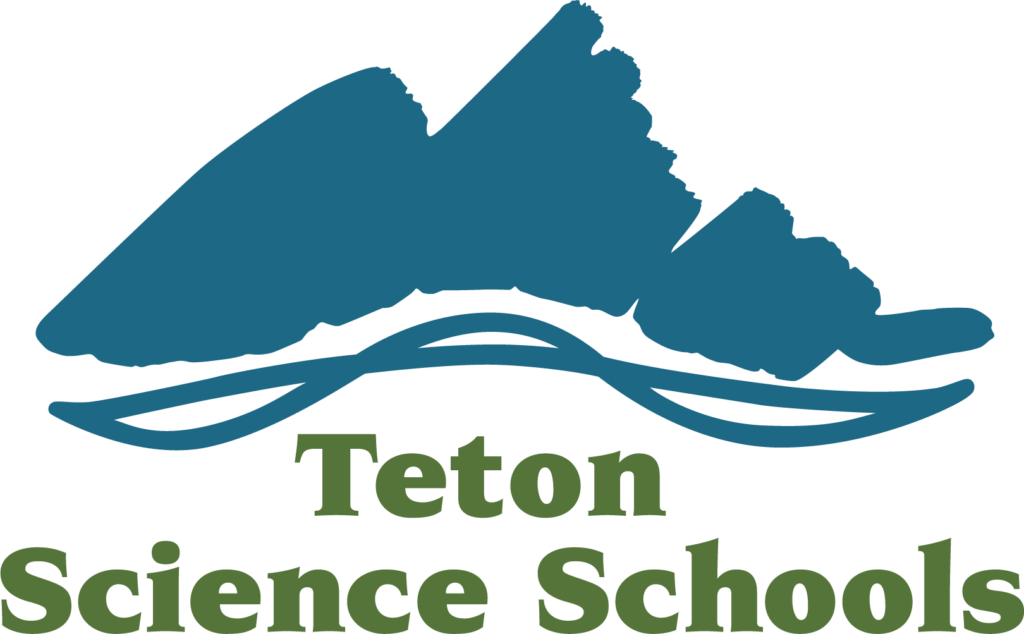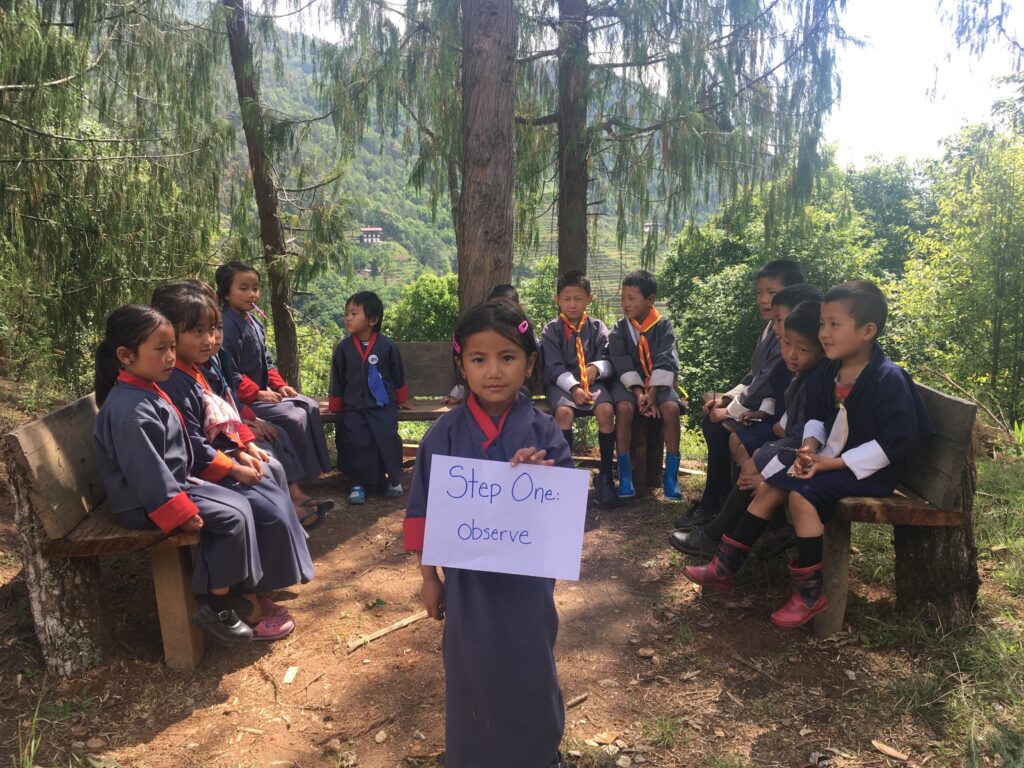
Join us for part three of our special summer blog series by TSS-Bhutan Graduate Fellow, Emma Griffin, featuring the place-based education work that is happening with our partners in Bhutan.
In 2017, alongside the launch of the Teton Science Schools (TSS) and Bhutan Fellowship, TSS established another Bhutanese partnership with the Youth Development Fund (YDF). YDF is a local non-profit organization focusing on curbing the rapid rural-to-urban migration currently facing Bhutanese culture. Its mission is to empower, support and inspire the youth of Bhutan. The organization achieves this through multiple programs and projects ranging from entrepreneurial opportunities to educational scholarships. The organization is led by the President, Her Majesty the Queen Mother, Ashi Tseyring Pem Wangchuck, who has a strong vision for quality education, leadership and the ability of the youth of Bhutan to address the needs and concerns of their communities and Nation. It is these beliefs that led to the partnership with TSS and the launch of a model place-based Village School.
The agreement between TSS and YDF addresses some of these common education goals through the support of a TSS-YDF Fellow, whose main focus is implementing a PBE curriculum into the village school. The hope is to transform a small village school on the verge of closure into a thriving Place-Based Education school that could serve as a model for the Nation. As the current Fellow, I have been working closely with YDF, the curriculum and the lead teacher of the school since the beginning of 2018 to achieve these goals. To highlight the work that is being implemented at the Model PBE school, Madam Kinley Zam, the lead teacher at Gyalyum Tseyring Pem Wangchuck’s School in Talhogang Punakha, will share her thoughts about PBE and the impact it has had in the school.
TSS Fellow: Tell us a little about your teaching history, how long you have taught here in Talhogang and when and how you first started learning about place-based education.
Madam: My name is Kinley Zam and I work as a teacher here in Talhogang Extended Classroom which is a model place-based School. I have completed nine years of service in teaching and this is my fourth year here in Talhogang. It was in the year 2017 that I got a week-long training on PBE. That’s where I got some ideas about PBE and its strategies. Moreover, with our school being a model school I have been vigorously working with PBE for 2 years now.
TSS Fellow: What makes Gyalyum’s School different from the other primary schools in Bhutan?
Madam: Since the school has been adapted by YDF it was named as Gyalyum’s School (which translates to Queen Mother’s School). I think it is different from the other primary schools in Bhutan because here in the school, the educational approach the we follow all the time is a place based one. The curriculum we practice is arranged in such a way that it takes care of the PBE principles which none of the others schools in Bhutan follow as strictly. The other primary schools use the National Curriculum created by the Royal Education Council (REC) which has only few PBE ideas included.

TSS Fellow: What does PBE mean to you?
Madam: To me, PBE is all about connecting text to the real-life situation whereby children get to explore their own places and get well equip with the values, the lifestyles and the resources available, all within the teaching and learning process.
TSS Fellow: What curriculum do you use at the school?
Madam: We use the curriculum that is provided by the Royal Education Council but we have rearranged the curriculum to be a place-based one. The curriculum is designed with each of the six principles of PBE as a main theme for each of the units. The curriculum also has Gross National Happiness (GNH) Values imbedded into the framework, along with STEAM (Science, Technology, Engineering, Arts, and Math) recently being used in the Inquiry and Design Thinking units.
TSS Fellow: What are some examples of the curriculum coming to life in the classroom?
Madam: The curriculum comes to life through the 6 principles which act as our unit themes. For example, most of the time we use the principle local to global where we use the resources in the community in order to teach the topics in the classroom. We also frequently use observations skills (Inquiry process) in order to observe the environment around. We also do a few design thinking projects each school year.

TSS Fellow: What Place-based Projects are you and your students currently working on? What has been the place-based project that has been most successful?
Madam: We are currently working on a video project that highlights the lifestyles of the students’ locality. The students get to go to different places on field trips and then they learn about each place by interviewing people, observing the work of the local people and visiting the important places in the community. By the end of the year we will be able to create a beautiful video on the community.
One of the most successful projects was our garden design project from last year. We made a short video clip where we show the steps of the design thinking process. The garden is currently being used as an outdoor classroom for the children to learn in. We also made a place-based ABC book that highlighted different local objects and experiences for each of the English Alphabet letters.

TSS Fellow: How has your ability to implement PBE changed over the past couple of years?
Madam: In the beginning, when I first got trained in PBE, I was a little nervous about implementing the PBE strategies. I wasn’t really sure about the in-depth content, the strategies and the processes. Now that I’ve had the chance to work with you [Emma, the TSS Fellow] for around 2 years, I feel much more confident about implementing those strategies into my day to day teaching. I was also able to observe your [Emma’s] PBE lessons and whenever I had some trouble, I was able to ask the questions I had which helped me improve. Now I feel very confident in teaching PBE.

TSS Fellow: How do you think PBE is relevant in Bhutan? How do you see it being implemented in Bhutan long term?
I think PBE is very relevant in a country like Bhutan from both the geographical viewpoint as well as the philosophy of Gross National Happiness (GNH). GNH has four main pillars which is being taken care of by the principles of PBE. It beautifully embeds all of the pillars into the principles. If we are able to teach our children in a place-based way it will definitely help to keep our GNH values moving forward in our future. Everything that PBE demands is all related to teaching values, the concepts of locality, ownership and taking care of the environment, and knowing themselves. All are important for Bhutanese Education.
Emma Griffin is a TSS Graduate Program Alum (class of 15’-16’) and the first TSS-Bhutan Fellow. She traveled to Bhutan in August 2017 for an 11-month Fellowship and fell in love with the place and culture, extending her Fellowship for another year plus. She is currently working in Thimphu under the Bhutan Youth Development Fund implementing PBE in a small rural community school, Gyalyum’s Village School, which is a model PBE Primary School under Bhutan’s Ministry of Education.


